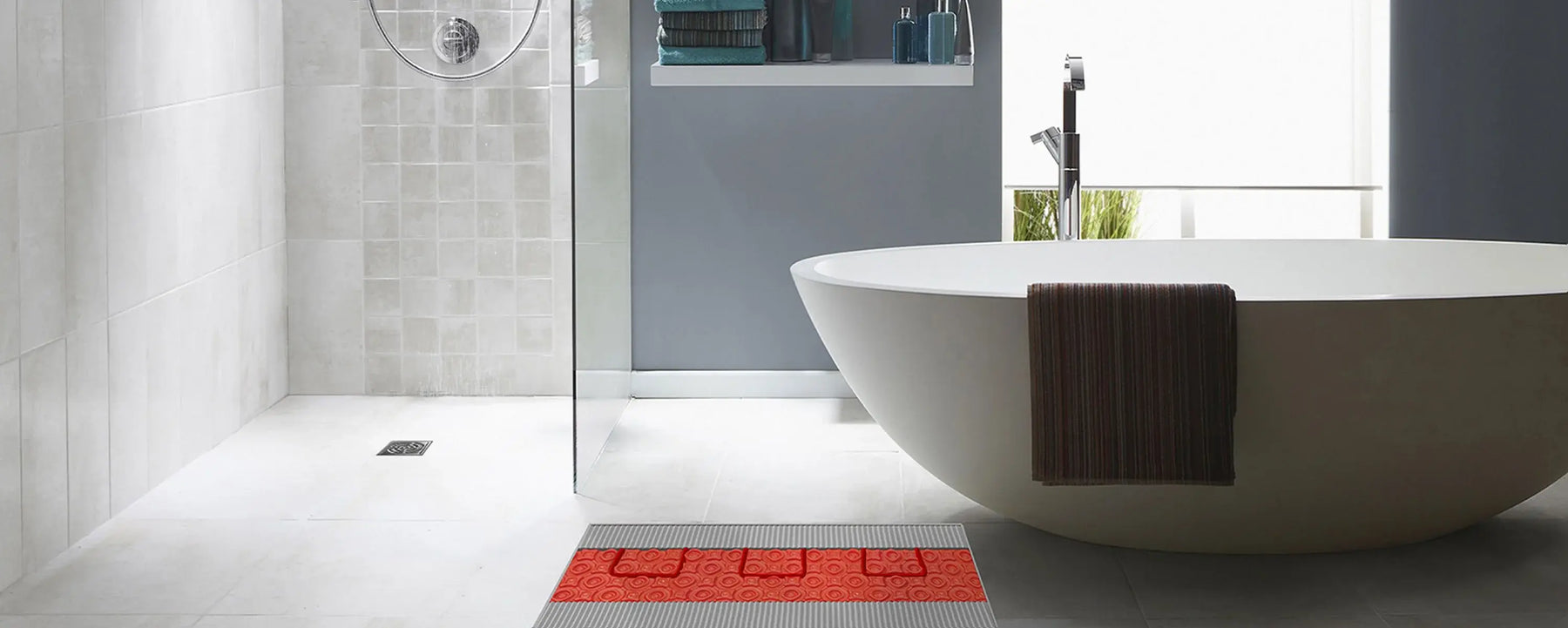
(502) 783-7995
(502) 783-7995


Stepping onto a warm tile floor in the middle of winter is one of life’s simple luxuries. Thanks to tile floor heating, chilly mornings in the kitchen or bathroom are no longer something to dread. But what happens when you want to add a rug for style, comfort, or just to keep your dog from claiming the entire floor? Many homeowners ask the same question: Can you put a rug on a heated tile floor without causing problems? The answer is yes, if you choose the right rug.
Radiant floor heating delivers warmth in a different way from radiators. Instead of relying on air circulation, the heat radiates evenly upward from the floor, leaving no cold spots. Adding a rug changes how that heat is transferred into the room. A thin rug allows warmth to pass through with minimal impact, while a thick or non-breathable rug can act like insulation, slowing the release of heat. The key is knowing which rug types complement your heated tiles and which ones could restrict performance.
Plenty of rugs can be used safely with radiant heating. The best choices are breathable, natural, and relatively thin so they don’t block the heat. Options include:
Here’s a quick overview of which materials are rug-friendly and which to avoid:
| Safe Rug Materials | Risky Rug Materials |
|---|---|
| Cotton | Rubber-backed |
| Jute, Sisal | Foam-based or thick synthetic |
| Thin wool blends | Rugs with adhesives or plastic coatings |
| Open-weave designs | High-pile shag or plush rugs |
Some rugs should be avoided altogether on heated tiles because they trap heat or react poorly to warmth. These include:
The rule of thumb is simple: if a rug feels heavy and airtight, it’s not suitable for heated floors. Lighter and breathable options are the safe bet.
Blocking too much heat isn’t just inefficient; it can shorten the lifespan of your heating system or, in rare cases, create hazards with the wrong materials. Always check rug labels for a “floor heating compatible” note. If there’s no mention, assume it isn’t designed for radiant heat. For extra peace of mind, use a floor heating thermostat to control surface temperatures. This ensures safe operation while keeping both your floor and rug in good condition.
Radiant systems are efficient because they deliver heat evenly from the ground up. Rugs, even safe ones, can slightly change how quickly warmth spreads through the room. A thin rug might make your floor feel a bit less responsive, while a thick one can cause the system to run longer, increasing energy costs. The difference is usually small with the right rug, but noticeable with the wrong one.
Efficiency also depends on what’s beneath your system. Adding floor heating insulation under concrete subfloors helps direct heat upward, keeping running costs steady. Think of it as giving your heating system a head start before the rug comes into play.
Rugs and heated floors can coexist perfectly if you follow a few simple guidelines. Here’s how to enjoy both without worry:
Can I use a large area rug on my heated tile floor?
It’s best not to cover the entire surface. Doing so traps too much heat, making the system less efficient. Smaller, breathable rugs are a better choice for high-traffic zones.
Will a rug damage my heating mats or cables?
No, if the rug is safe for radiant heating. Avoid rubber, plastic, or foam-backed rugs, as they can trap heat or break down under high temperatures. Stick with natural, thin options.
Do I need special pads under rugs on heated floors?
Yes. Standard pads may insulate too much. Look for pads labeled safe for use with radiant heating so they secure the rug without blocking heat transfer.
What’s the best temperature range for heated tile floors with rugs?
Keep your thermostat set between 76°F and 85°F. This range strikes a balance between comfort and efficiency, ensuring the rug and system remain safe together.
So, can you put a rug on a heated tile floor? Absolutely, if you choose wisely. Thin, breathable, and natural rugs allow radiant heat to flow freely, while adding style and comfort to your room. Rubber-backed or thick synthetic rugs, on the other hand, block airflow and put a strain on your heating system.
With the right approach, you get the best of both worlds: efficient warmth underfoot and the cozy character of a rug. Ready to plan your heated floor project? Explore tile floor heating systems from ProLux and create a space where warmth and design work together seamlessly.

Our under floor heating experts will work on the design and layout of your project, for free!